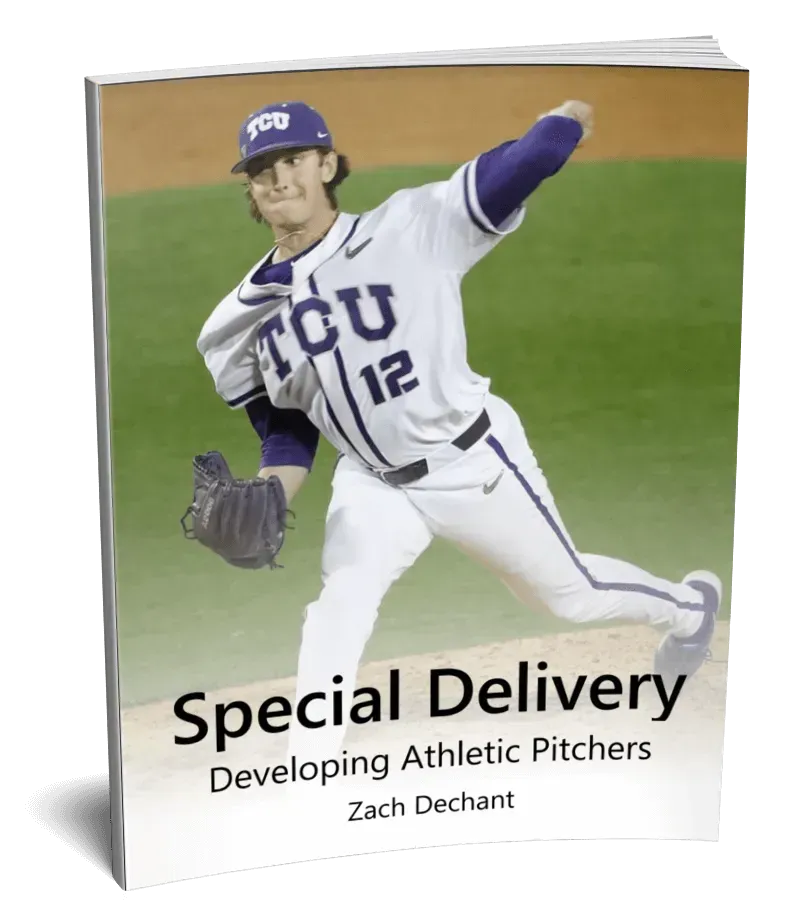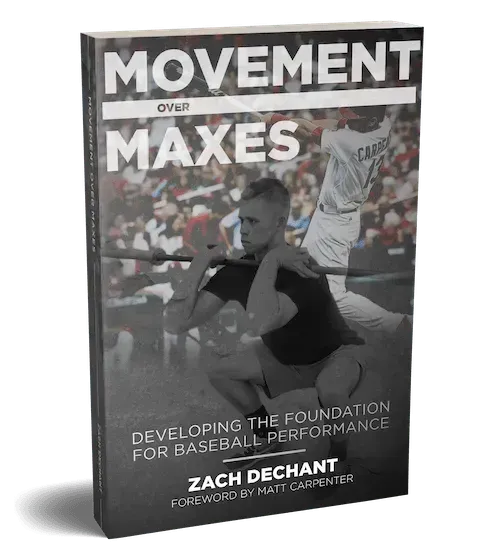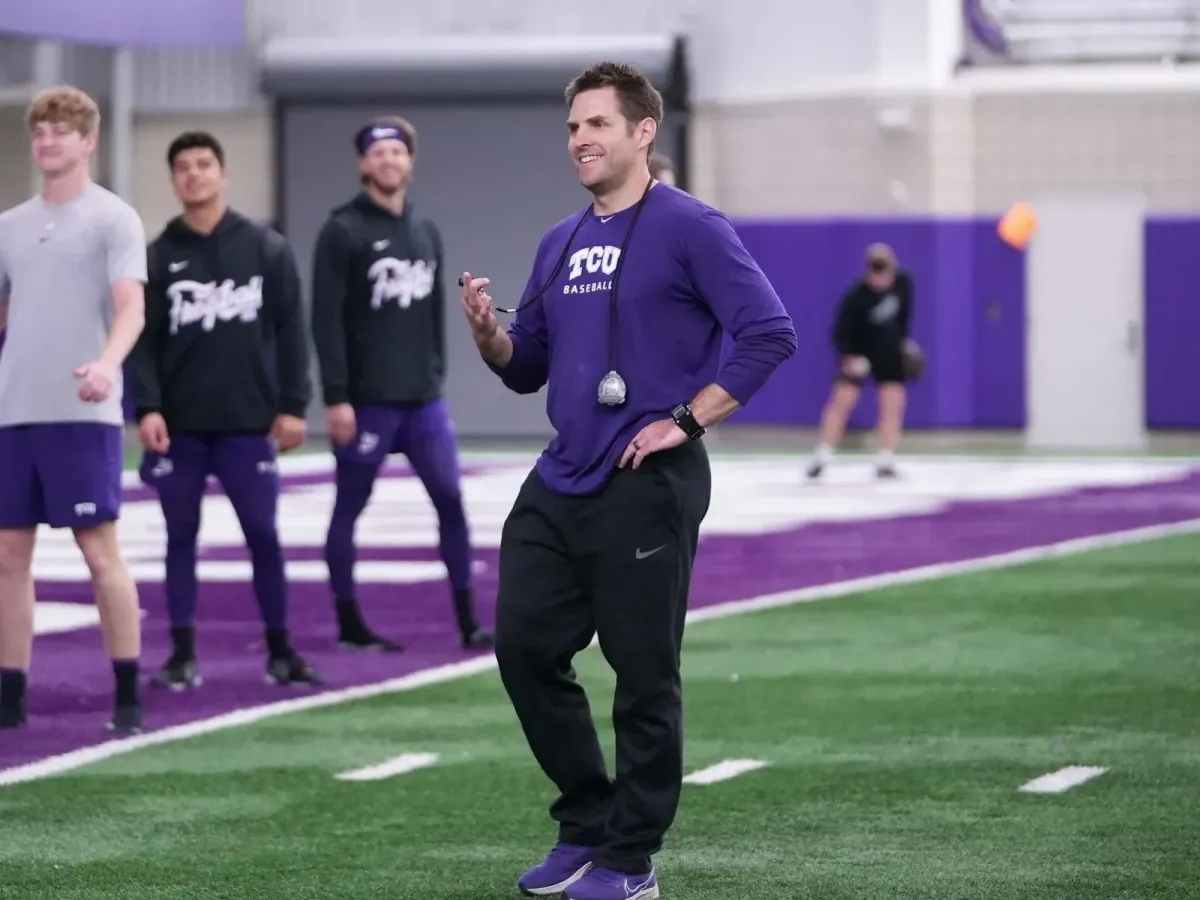Free Pitcher's Training eBook Reveals
How To Develop Athletic Pitchers And Train Them With An
Emphasis On Speed, Power & Movement

...and they must be treated as such. The act of pitching is an explosive, total-body movement.
There is nothing slow about it. Thus, our
overarching goal in training pitchers is to make
them fast, powerful, and explosive -- so that's how
they should train.
However, several factors separate pitchers from the rest of the team and these should be taken into account when developing a training program.
In this PDF eBook, you're getting the complete, individualized strength & conditioning approach utilized to assess, develop and train athletic pitchers that move explosively.
Movement Over Maxes
Developing The Foundation for Baseball Performance

"If you want to improve your program and give your athletes a winning edge, this book is a must!"
Movement Over Maxes is a Foundational Program that serves as the starting point for any athlete. It functions as a guide for all coaches to begin to understand and implement basic movement patterns with a long-term development approach.
This was created for the coach who wears every hat for their program... The coach who mows the grass, drags the infield, handles the equipment, AND trains the athletes! This is for the coach who devotes their life to not only creating better baseball players, but growing boys into men through the sport.

Tracking Tonnage: Waste of My Time
Something I went back and forth with over the early years in my career was the concept of tracking how much in the weight room. As a younger strength coach with more time I use to create multi-week cycles for compound lifts that tracked everything from average intensity to tonnage and every other useless metric in between. Each week would be a certain percentage of the total months load, the total reps for the day, week, month, and year were tracked. In short I wanted to organize and classify everything including total load and tonnage for my athletes.
If you’ve read the book THE SYSTEM you know about tracking total loads. The Soviets talk about total loads and tracking tonnage frequently in their weightlifting training manuals. What I came to realize is it wasn’t making my programs any better. It took a lot of time away from other things that I found much more important and necessary for the program. Most of our team sport athletes need to focus on actual lift execution a hell of a lot more than worrying about cycle tonnage. That alone would improve development in many cases.
Readiness for their sport should be one of… if not the biggest factor in an athletes training. This means that autoregulating the training is probably pretty important. If you’re purposely trying hit predetermined tonnage numbers readiness is most likely out the window. Beat up and stressed athletes needed to do less…often times much less. There goes your cycle guidelines. I ran into many issues over the years when it came to answering this question of if I should be tracking total loads and tonnage.
Due to space, equipment, and the number of athletes we have, we often have to use band tension. This may not be ideal but it still creates tension and tension creates adaptations. The issue becomes how do you track band tension. Many of the movements that I’ve come to use with baseball obviously revolve around the scapular and glenohumeral stabilizers. How do you track these smaller movements that make up a large portion of your program yet don’t focus on absolute load?
Comparing a reverse pull-up / lateral lunge / or step back medball throw to a push jerk, full squat snatch, or front squat is comparing apples to oranges. Tonnage is stolen from Eastern Bloc theories on weightlifting specifically. The Soviet’s were training professional weightlifters. Their sport was also their training. This is completely different than team/field sport athletes. I’m not chasing specific tonnage. I’m chasing adaptations for athletes on a field. That means the sport is their most specific means. Tracking on field metrics to me are way more important than what happens in the weight room.
Lifting is nothing more than an accessory to what happens on the field and something that I must adjust for each individual accordingly. Most coaches go down this rabbit hole thinking tonnage is a magic bullet of development. Let me tell that’s it’s definitely not. This often over complicates and clouds up common sense thinking. The reality is our athlete aren’t professional lifters. The majority of our athletes are novice or intermediate lifters at best and just emphasizing consistency and technique will serve them far greater in the long run.
Make sure you can coach, teach, implement, progress an efficient program first before worrying about creating systems of tracking tonnage and cycle breakdowns. In the end most coaches will discover less is more when it comes to simplifying the process.
CONNECT WITH ZACH ON TWITTER
ABOUT ZACH DECHANT
Zach has been in place since 2008 at TCU and is the current Assistant Athletic Director of Human Performance. He oversees the development of Baseball. Alongside those priorities he also handles the development and implementation of the TCU Sports Performance Internship Program that has been in place for over 15 years. Over that time the internship program has encompassed 40+ semesters and 250+ intern coaches that have moved on to all levels of professional, collegiate, high school, and private strength and conditioning.
During baseball off-seasons, Coach Dechant trains a group of 30+ current MLB / MiLB Frogs. The pro Frogs spend 4 months back on campus training for the upcoming season...


©️ 2024
